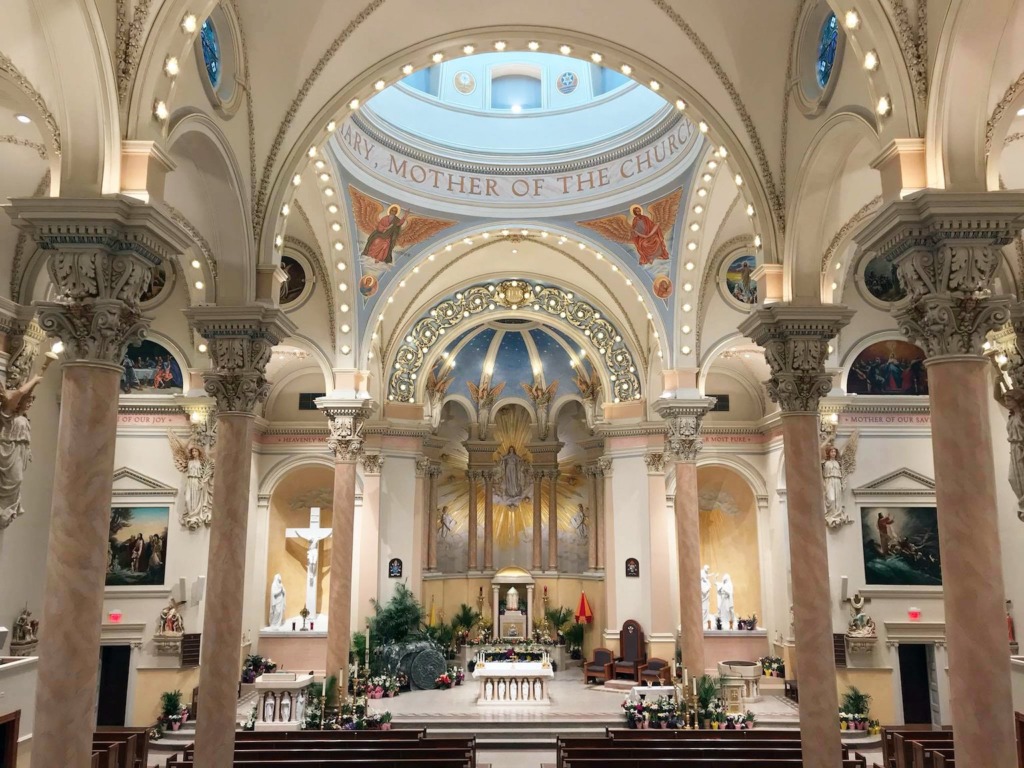Other factors include aging clergy, fewer sacraments of initiation
STEUBENVILLE, Ohio (CNS) – A proposed merger between the Diocese of Steubenville and the Diocese of Columbus, Ohio, will undergo further discussions on the diocesan level after a survey of parishioners showed “disappointment and even fear” over the proposal, said Steubenville Bishop Jeffrey M. Monforton.
He made the comments in a Nov. 7 letter to the priests of his diocese.
It was scheduled to be discussed and voted on by the U.S. bishops during their Nov. 14-17 general assembly in Baltimore, but Bishop Monforton said in his letter that he has asked the U.S. Conference of Catholic Bishop to remove this from the agenda.
The decision to erect, merge or suppress dioceses belongs to the pope, but this always is done in consultation with the bishops’ conference.
The proposed merger of the two Ohio dioceses has been prompted by factors such as aging priests and fewer priests to serve the diocese, a significant decline in baptisms and first Communions in the past 10 years, as well as the diocese seeing a decreasing number of Catholics, who themselves are aging, and a general population that is shrinking.
The proposal was announced Oct. 10 and since then, “many have voiced their counsel, including disappointment and even fear,” Bishop Monforton said in his letter. “The results from the recent survey (of parishioners) provide further evidence of a division in the future vision for the Church’s service in the Ohio Valley.”
Bishop Monforton told The Steubenville Register, the diocesan newspaper, that Ohio’s Catholic bishops met and voted unanimously sometime in September 2021 to merge the two dioceses.
“It is with sadness of heart that I share with you the continued decline in the Ohio Valley population and how it adversely affects our future sustainability,” the bishop wrote in a front-page article in the Oct. 14 issue of the paper. “Furthermore, we are all too aware how the population is aging as well, to our ministerial detriment.”
He shared some statistics:
■ In 1990, approximately 24,730 people attended Sunday Mass in the diocese. In 2019, 13,700 attended Mass.
“That is a 45% decline,” he wrote. “Even comparing figures from 2010-19, we realize there has been a 20% decline in those last nine years. It is not that helpful to employ numbers from 2020 and 2021 due the effects of the pandemic on church attendance.”
■ The diocese is made up of four deaneries, or regions.
“None of them has increased in number since 1990 or 2010,” he explained. “Since 1990, Mother of Hope Deanery has lost 34% of its Mass attendance, Presentation Deanery has lost 40%, Visitation has lost 38% and Nativity has lost 52%.”
■ The diocese has fewer than 30,000 Catholics while the next smallest diocese in Ohio is Youngstown with 146,000 Catholics. Cleveland is Ohio’s largest Catholic diocese – with 633,000 Catholics.
■ The Steubenville Diocese has six active priests who are 70 or older; 12 are in their 60s; five are in their 50s (six if Bishop Monforton is included); four in their 40s, seven in their 30s and two in their 20s.
“If all priests in their 60s would stay in active ministry 10 years from now, half of our active priests will be 70 or older. One may ask: Is this not the case for many dioceses?” the bishop said. “We are more vulnerable due to the fact we are small in number, in priests and in Catholics.”
In his column in the Oct. 28 issue of The Register, Bishop Monforton said: “We need to be clear that the Catholic Church will remain in the Ohio Valley and throughout the 13 counties that comprise the Diocese of Steubenville.”
“Our Catholic schools remain open, our Catholic churches remain open and all developmental initiatives for our Catholic institutions will continue,” he continued.
“While the Catholic Church remains in our pastoral footprint, it is the governance of the entire diocese that will be modified through additional assistance, thereby strengthening our ministerial outreach,” he said.

